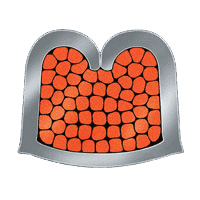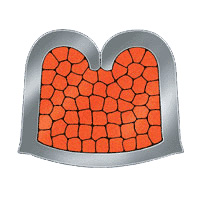What does gas-tight mean?
As a gas-tight connection is one where the conductors and connectors are so tightly deformed and compressed together that there are no cavities between them. Neither a liquid nor a gas-type medium can penetrate the crimp in normal atmospheric conditions.
Oxidation between the compressed individual wires is suppressed and any increase in the crimp transition resistance is almost impossible.
In some cases it is possible that isolated cavities will still occur. As a result of the fact that the cable is twisted, however, these cavities may be regarded as self-sealed. A dense crimp can be tested using a section. The section level is ideally in the middle third of the conductor crimp sleeve and between the compressed grooves.
Where compression is insufficient
- The conductor can be pulled out of the connection
- Cavities can remain in which oxidation can take place
Oxidation increases transfer resistance.
Increased resistance is disadvantageous for
- Signal transmission because it attenuates (weakens) the signal flow
- Power transmission because energy is lost and contacts are heated (risk of fire)
Where compression is sufficient, the individual conductors are pressed tightly together and deformed. This allows compression without the formation of any appreciable cavities.
 |
 |
| Compression is insufficient | Compression is sufficient |
